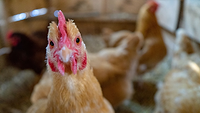Highlighting Most Recent U.S. AMR Trends in Foodborne Pathogens During World AMR Awareness Week

Image credit: aleksandarlittlewolf via Freepik
With the goal of increasing understanding of one of the leading threats to global public health, World Antimicrobial Resistance (AMR) Awareness Week is recognized annually from November 18–24. In light of World AMR Awareness Week 2024, the U.S. Department of Agriculture (USDA) has highlighted trends from its most recent National Antimicrobial Resistance Monitoring System (NARMS) report, covering 2021.
NARMS is a national public health surveillance system in which USDA’s Food Safety and Inspection Service (USDA-FSIS), the U.S. Centers for Disease Control and Prevention (CDC), the U.S. Food and Drug Administration (FDA), and state and local public health departments track changes in the antimicrobial susceptibility of select foodborne pathogens isolated from clinical patients, retail meats, food-producing animals, and animal-derived foods.
Consistent with previous years, NARMS 2021 data shows that most Salmonella isolates from humans (78 percent) were not resistant to any antibiotics tested under the program. From 2006–2020, 76–85 percent of human Salmonella isolates were not resistant to any antimicrobials tested.
However, a concerning trend was noted regarding Salmonella’s decreased susceptibility to ciprofloxacin (DSC), which indicates a pathogen’s combined resistance and intermediate resistance. DSC was found to be increasing in Salmonella—in human isolates, DSC grew from 9 percent in 2020 to 11 percent in 2021, mainly due to serotypes S. I 4,[5],12:i:- (9 percent in 2020 to 19 percent in 2021) and S. Enteritidis (29 percent in 2020 to 32 percent in 2021). DSC also increased in chicken isolates from all sources (excluding retail chicken); and in chicken products specifically, DSC in S. Enteritidis increased from 20 percent in 2020 to 29 percent in 2021.
Resistance to ciprofloxacin in Salmonella from retail chicken decreased for the first time since 2015 (from 41 percent in 2020 to 30 percent in 2021), but DSC remained high in S. Infantis from retail chicken—remaining greater than 99 percent in 2021. This high percentage is driven by a multidrug-resistant (MDR) strain of S. Infantis. DSC also declined in Salmonella isolates from all turkey sources except retail turkey, which rose from 6 percent in 2020 to 13 percent in 2021.
Decreased susceptibility to azithromycin (DSA) was also detected in Salmonella isolates. DSA was detected in less than 2 percent of Salmonella isolated from humans, with S. Newport comprising more than half (59 percent) of the isolates.
Resistance to last-resort drug colistin was below 3 percent in Salmonella isolates from most retail and food animal samples, except for in cattle products, where it was detected in 8 percent of isolates.
For E. coli, DSC rose among most retail food and animal samples, except for retail chicken, which remained stable at 4 percent. Additionally, E. coli with no AMR to NARMS-monitored drugs showed an increase across retail chicken (41 percent in 2020 to 52 percent in 2021), retail ground turkey (18 percent in 2020 to 29 percent in 2021), and retail ground beef (62 percent in 2020 to 77 percent in 2021).
Colistin resistance was found in one E. coli isolate from retail chicken, two from retail ground turkey, and three from retail ground beef. None of the Salmonella or E. coli isolates from animals, animal products, or retail meats showed any mobile colistin resistance genes.
Fluoroquinolone resistance increased in Campylobacter human isolates (from 25 percent in 2020 to 28 percent in 2021), as well as in isolates from beef cecal samples (38 percent in 2020 to 39 percent in 2021), market swine (31 percent in 2020 to 32 percent in 2021), chicken products (17 percent in 2020 to 19 percent in 2021), and turkeys (40 percent in 2020 to 41 percent in 2021).
Avilamycin resistance remained uncommon (less than 2 percent) for all Enterococcus isolated from retail and food animal samples.
Looking for a reprint of this article?
From high-res PDFs to custom plaques, order your copy today!






